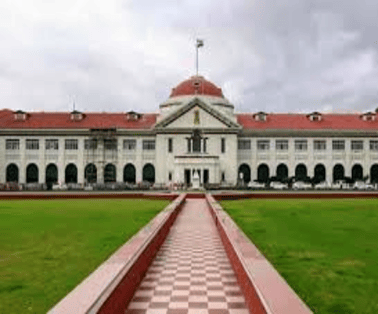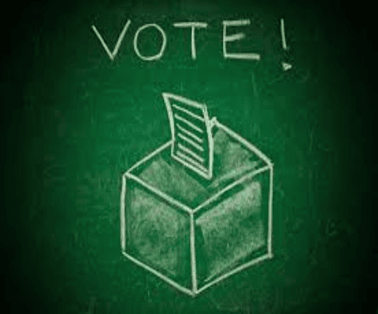The Patna High Court recently struck down the Bihar government’s attempt to raise reservations for Backward Classes, Scheduled Castes (SC), and Scheduled Tribes (ST) from 50% to 65% in government jobs and admissions. The verdict, passed on June 20, 2024, ruled that the increased quota violated constitutional provisions and the Supreme Court’s 50% ceiling on reservations. The Bihar government has since moved the Supreme Court to challenge this decision.
Background: Bihar’s Reservation Expansion
In November 2023, the Bihar Assembly unanimously passed the Bihar Reservation Amendment Bill, raising the overall quota to 75%—65% for Backward Classes, SCs and STs, and 10% for Economically Weaker Sections (EWS). This move followed a caste-based survey which revealed that over 84% of the state’s population belongs to historically deprived groups.
Key socio-economic indicators that influenced the state’s decision include:
- Bihar has the lowest per capita income in India (below USD 800).
- It has the highest fertility rate and only 12% urban population.
- The state has the lowest college density and around 30% of people live below the poverty line.
- SCs, STs, and Backward Classes make up 84.46% of the population but remain underrepresented in jobs and education.
The Patna High Court Verdict
The Patna High Court invalidated the reservation hike, citing violations of Articles 14, 15, and 16 of the Constitution. The key reasons for the judgment include:
- The amendment breached the 50% reservation cap established by the Supreme Court in the Indra Sawhney v. Union of India (1992) case.
- It lacked a proportionate representation framework.
- There was no detailed impact assessment or empirical data justifying the hike.
- The move failed to balance affirmative action with merit-based opportunities.
The Patna High Court’s ruling emphasized the importance of constitutionally sanctioned affirmative action, reinforcing that welfare policies must adhere to legal boundaries.
Appeal to the Supreme Court
Dissatisfied with the High Court ruling, the Bihar government has filed a petition in the Supreme Court. The state argues that the reservation hike is essential to address deep-rooted social and economic inequalities exposed by the recent caste survey.
Reservation Beyond Bihar
Other states also exceed the 50% ceiling:
- Chhattisgarh: 72%
- Tamil Nadu: 69%
- North-Eastern States (e.g., Arunachal Pradesh, Mizoram, Nagaland): Up to 80%
- Lakshadweep: 100% reservation for STs
These cases may provide Bihar with legal precedent or comparative justification during its appeal.
Historical Timeline of Reservation in India
Reservation in India is a system of affirmative action that provides certain groups of people with preferential treatment in education, employment, and other areas.
Pre-Independence
- 1882: The concept of reservation based on caste was first proposed by William Hunter and Jyotirao Phule in 1882.
- 1909: The British Raj introduced elements of reservation in the Government of India Act of 1909 by giving separate electorates to certain communities.
- 1902: Rajarshi Shahu, the Maharaja of Kolhapur, introduced reservation in favour of non-Brahmin and backward classes in 1902.
- 1921: Mysore initiates reservation for backward castes after a decade-long social justice movement against the repression of non-Brahmin castes.
- 1927: Madras presidency provided 44% reservation to Non-Brahmin Hindus, 16% to Brahmins, Muslims, Christians, and Anglo-Indians, and 8% to Scheduled Castes.
- 1935: The Government of India Act of 1935 extended the communal representation by giving separate electorates to depressed classes, women and labour.
Post-Independence
- 1951: First Constitutional Amendment in Constitution to legalize caste-based reservation in India.
- 1990: The Mandal Commission (1979) recommendation of 27% reservation for OBCs was implemented.
- 1992: Indra Sawhney Case Judgement: Reservation shall not exceed 50 percent. Reservation in promotions shall not be allowed. The concept of a ‘creamy layer’ was introduced, and it was directed that such a creamy layer be excluded while identifying backward classes. The ‘carry forward rule’ in case of unfilled (backlog) vacancies is valid. But the criteria of the 50% rule should not be violated in any case. It struck down the move to reserve 10% government jobs for the poor among upper castes
- 2006: Nagaraj Case Judgement: The Supreme Court ruled that the state was not bound to provide reservation in promotions to SCs/STs. But if any state wished to make such a provision, it needs to: Collect quantifiable data on the backwardness of the class, Prove its inadequate representation in public employment and Show no compromise on efficiency of administration
- 2006: The Central Educational Institutions Act, 2006 provides for the reservation of students belonging to the Scheduled Castes/ Scheduled Tribes and Other Backward Classes to the extent of 15%, 7.5%, and 27%, respectively, in Central Educational Institutions.
- 2018: Jarnail Singh vs Lachhmi Narain Gupta Case Judgement: The Supreme Court held that reservation in promotions does not require the state to collect quantifiable data on the backwardness of the SCs and the STs. The Court also held that creamy layer exclusion extends to SC/STs and, hence the State cannot grant reservations in promoting SC/ST individuals who belong to the creamy layer of their community.
- 2019: The Government of India has provided 10% reservation to economically weaker sections(EWS) through the 103rd Constitutional Amendment. This is the first time reservation has been extended on the basis of economic criteria.
- 2019: Reservation in favour of SCs and STs in Lok Sabha and the state legislature was only till 1960, but it has been extended every 10 years. The latest extension was made in 2019 and is valid up to 2030.
- 2021: 102nd amendment to allow states and Union Territories to prepare their own Socially and Economically Backward Classes (SEBCs) list.
- 2022: Janhit Abhiyan v Union of India: The Supreme Court upheld the 103rd Constitutional Amendment providing reservation for economically weaker sections (EWS). Thus, the apex court validated reservations based on economic backwardness.
Constitutional Provisions
- Part XVI of the Constitution of India deals with the reservation of SC and ST in Central and State legislatures.
- Article 15(3) provides special provision for women and children.
- Article 15(4) and Article 15(5) provides special provision for the advancement of any socially and educationally backward classes of citizens or for the SCs and the STs, including their admission to educational institutions, including private ones.
- Article 15(6) provides special provisions for the advancement of any Economically Weaker Sections (EWS) of citizens other than the classes mentioned in clauses (4) and (5).
- Article 16 provides for the grounds of positive discrimination or Reservation in government jobs.
- Article 233T provides reservation of seats for SCs and STs in every Municipality.
- Article 243D provides reservation of seats for SCs and STs in every Panchayat.
- Article 335 of the constitution says that the claims of STs and STs shall be taken into consideration consistently with the maintenance of efficacy of the administration.
- Articles 330 and 332 provide for specific representation through the reservation of seats for SCs and STs in the Parliament and in the State Legislative Assemblies respectively
103rd Constitution (Amendment) Act, 2019:
- It provides for reservation to EWS in jobs in central government jobs as well as government educational institutions.
- It was introduced by amending Articles 15 and 16 and inserted Article 15 (6) and Article 16 (6).
- It was enacted to promote the welfare of the poor not covered by the 50% reservation policy for Scheduled Castes (SCs), Scheduled Tribes (STs) and Socially and Educationally Backward Classes (SEBC).
- It enables both the Centre and the States to provide reservations to the EWS of society
Conclusion
The Patna High Court’s decision has reignited the national debate on the limits and legal validity of extended reservation policies. While the Bihar government seeks relief from the Supreme Court, the outcome will likely have broader implications for affirmative action frameworks across India. As the legal process unfolds, the Patna High Court remains central to this evolving constitutional narrative.
To Download Monthly Current Affairs PDF Click here
Click here to get a free demo
Discover all about CLAT Exam



